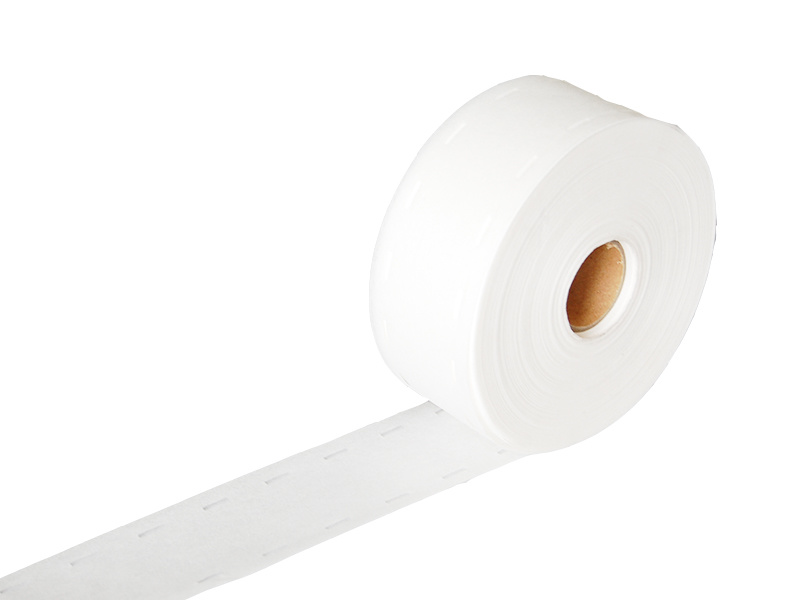How Soft Handfeel Fusible Interlining Enhances Fabric Comfort for Superior Textiles
Release time:
2025-06-21
How Soft Handfeel Fusible Interlining Enhances Fabric Comfort
Table of Contents
- 1. Introduction to Fusible Interlining and Its Importance
- 2. What is Fusible Interlining?
- 3. Benefits of Soft Handfeel Fusible Interlining
- 3.1 Enhanced Comfort and Feel
- 3.2 Improved Durability and Longevity
- 3.3 Design Flexibility and Versatility
- 4. Applications of Soft Handfeel Fusible Interlining in Textiles
- 5. How to Choose the Right Soft Handfeel Fusible Interlining
- 6. Care and Maintenance of Fabrics with Fusible Interlining
- 7. Frequently Asked Questions (FAQs)
- 8. Conclusion
1. Introduction to Fusible Interlining and Its Importance
In the world of textiles, comfort is paramount. As consumers increasingly seek garments that not only look good but also feel good against their skin, the significance of soft handfeel fusible interlining has come to the forefront. This specialized textile component plays a crucial role in enhancing the overall comfort of various fabrics. By understanding how fusible interlining works and its benefits, manufacturers and designers can create superior products that meet the demands of modern consumers.
2. What is Fusible Interlining?
Fusible interlining refers to a type of interfacing that is coated with a heat-activated adhesive on one side. When heat is applied, this adhesive bonds the interlining to the fabric, providing additional structure, support, and comfort. Fusible interlining comes in various weights, thicknesses, and textures, allowing designers to select the most suitable option based on the specific fabric and garment requirements.
Types of Fusible Interlining
Fusible interlining can be categorized into two main types:
1. **Woven Fusible Interlining**: Made from woven fibers, this type offers superior durability and stability, making it ideal for tailored garments.
2. **Non-Woven Fusible Interlining**: Composed of fibers that are bonded together through heat and pressure, non-woven interlining is often softer and provides a more comfortable feel.
3. Benefits of Soft Handfeel Fusible Interlining
Soft handfeel fusible interlining is particularly valued for the following benefits:
3.1 Enhanced Comfort and Feel
One of the standout features of soft handfeel fusible interlining is its ability to improve the tactile experience of fabrics. By adding a layer of softness, garments become more pleasant to wear, reducing irritation and discomfort. This is especially important for clothing items that are worn close to the skin, such as shirts, blouses, and dresses.
3.2 Improved Durability and Longevity
Beyond comfort, soft handfeel fusible interlining contributes to the durability of garments. It reinforces the fabric, helping to prevent stretching, sagging, and wear over time. This means that garments maintain their shape and appearance longer, offering better value for consumers.
3.3 Design Flexibility and Versatility
Soft handfeel fusible interlining allows designers to explore a variety of styles and silhouettes. It provides structure where needed while still allowing for movement and drape. This versatility is crucial for creating modern, stylish garments that appeal to diverse consumer tastes.
4. Applications of Soft Handfeel Fusible Interlining in Textiles
Soft handfeel fusible interlining is widely used across various sectors of the textile industry:
4.1 In the Fashion Industry
Fashion designers utilize soft handfeel fusible interlining in a range of garments, from high-end couture to everyday wear. It plays a vital role in enhancing the comfort of blazers, coats, and dresses, ensuring that these items not only look great but feel great to wear.
4.2 In Home Textiles
Beyond clothing, soft handfeel fusible interlining is also effective in home textiles. It is commonly used in curtains, upholstery, and other soft furnishings, providing the same level of comfort and durability that consumers expect from their clothing.
5. How to Choose the Right Soft Handfeel Fusible Interlining
Selecting the appropriate fusible interlining is essential for achieving the desired outcome in fabric comfort and performance. Here are key factors to consider:
1. **Fabric Weight**: Match the interlining weight with the fabric for optimal results. Lightweight fabrics often require lighter interlinings, while heavier fabrics might need a more robust option.
2. **End Use**: Consider how the finished garment will be worn. For items that require more structure, a firmer interlining might be necessary, whereas softer interlinings are better for casual wear.
3. **Washability**: Check the care instructions for both the interlining and the outer fabric to ensure compatibility, particularly regarding laundering and heat exposure.
6. Care and Maintenance of Fabrics with Fusible Interlining
To maintain the quality and comfort of fabrics with fusible interlining, proper care is essential:
1. **Washing**: Follow the care label instructions, opting for gentle washing cycles to prolong the life of the fabric and interlining.
2. **Ironing**: Use a low heat setting to avoid damaging the fusible adhesive. A pressing cloth can provide an extra layer of protection.
3. **Storage**: Store garments in a cool, dry place, avoiding exposure to direct sunlight to prevent fading and deterioration of the fabric.
7. Frequently Asked Questions (FAQs)
1. What is the difference between fusible and sew-in interlining?
Fusible interlining is bonded to the fabric using heat, while sew-in interlining is attached by stitching. Fusible interlining provides a smoother finish and is generally easier to apply.
2. Can fusible interlining be used with all types of fabrics?
While fusible interlining can be used with many fabrics, it is essential to choose the right type for the specific fabric to ensure optimal results. Lightweight fabrics might require lighter interlinings, while heavier fabrics may need sturdier options.
3. How does soft handfeel fusible interlining affect the garment's drape?
Soft handfeel fusible interlining enhances the drape of fabrics, allowing for more fluid movement while still providing necessary structure. This results in garments that look polished but feel comfortable.
4. Is fusible interlining washable?
Yes, fusible interlining is washable. However, it is crucial to follow the care instructions to maintain its bond and ensure longevity.
5. Can I use fusible interlining for DIY projects?
Absolutely! Fusible interlining is an excellent choice for DIY projects as it is easy to apply and can significantly enhance the comfort and durability of handmade garments.
8. Conclusion
Soft handfeel fusible interlining is an invaluable component in the textile industry, significantly enhancing fabric comfort. By providing a combination of softness, durability, and design flexibility, it meets the evolving needs of consumers who prioritize comfort in their clothing choices. As we continue to innovate and improve textile applications, understanding the benefits and proper use of fusible interlining will remain essential for designers and manufacturers alike. Embracing this technology paves the way for the creation of superior, comfortable fabrics that will satisfy even the most discerning consumers.
Soft Handfeel Fusible Interlining
Previous Page
Previous Page
Latest News
Nantong Rainbow Technology Co., Ltd.
Telephone:+86-13587673537
E-mail:chrislc717@163.com
Address: Group 42, Xizansi Village, Xiting Town, Tongzhou District, Nantong City, Jiangsu Province

Copyright©2024 Nantong Rainbow Technology Co., Ltd. | Powered by www.300.cn
Copyright©2024 Nantong Rainbow Technology Co., Ltd.
Powered by www.300.cn




